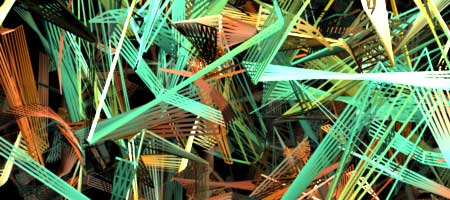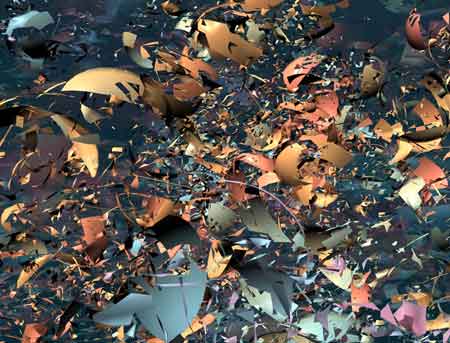Sometimes I get tired of the usual raster graphics. So I wanted something with the quality of lines but in the context of lighting models. I used a tool which can scale the polygons making them look like lines. Playing with fragmentation and random position and rotation, I was able to create layers of lines in space. It has more of a delicate feel and a nice change of pace for me. Probably should have made it a signature style and become rich and famous. But I get bored too easily and need to move on to something else. Money could motivate me to reconsider this direction.
Categories
- Animation (5)
- Computer Graphics History (5)
- Digital Art (31)
- Technique (25)
Archives



